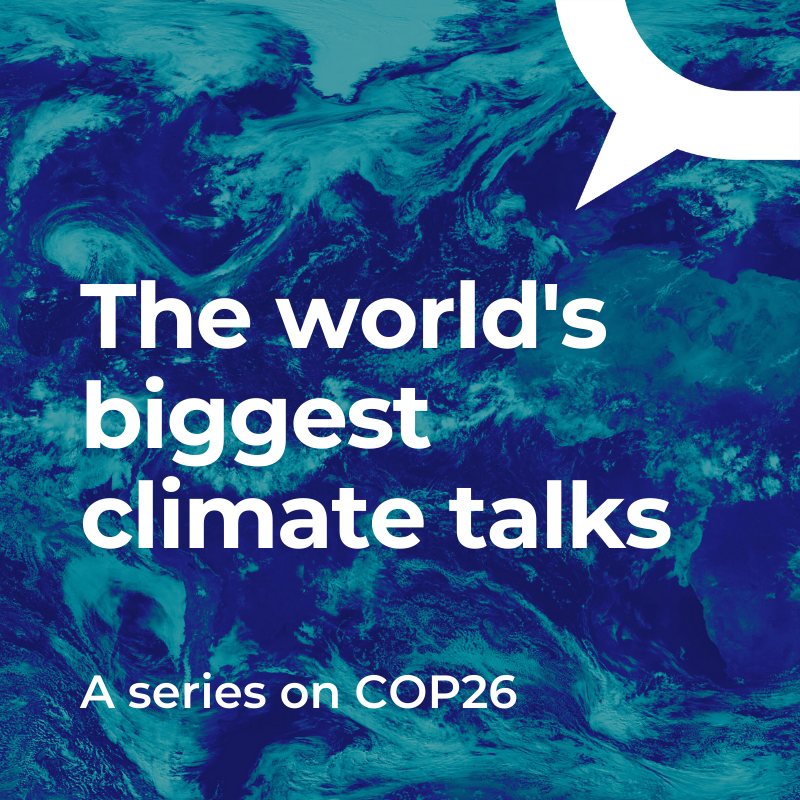Osman Ouattara, Reader in Development Economics, University of Manchester.
____
Ahead of a day of talks on climate finance at the COP26 climate change summit in Glasgow, the former Bank of England governor Mark Carney announced the launch of a coalition of financial companies committed to hitting net zero by 2050. The Glasgow Financial Alliance for Net Zero says it is made up of more than 450 different banks, asset managers, and insurers and represents up to USD 150trn in assets.
It is notable that this coalition of private sector firms is headed by Carney, a former senior central banker, as in recent years researchers, activists, and others have called for central banks to do more to fight climate change. And though central bankers have discussed the issue widely, they have generally focused on its implications for financial stability. Carney himself has previously warned that climate change could damage the financial system, as assets are damaged by extreme weather or become unviable (and thus uninsurable) as temperatures rise and climate action is normalized.
While the stability of the financial system is important, it remains a secondary objective for most central banks. Indeed, their primary goal is to maintain stable prices and achieve low inflation. But could climate change undermine their ability to achieve this primary objective?
How climate change affects monetary policy
Central banks have generally remained shy on this issue, as if they assume that they are immune from the effects of climate change. But my co-author Koyesha Mukherjee and I recently published research in which we showed that climate change does pose a threat not just to financial stability, but also to prices and inflation.
We highlighted various channels through which climate change affects price stability. For example, hotter temperatures and more frequent droughts could lead to a fall in agricultural output, resulting in food shortages. This in turn would drive prices up as the demand for food would be higher than supply.

Climate-related extreme weather also means more demand for energy (for cooling or heating) but also a fall in supply – thereby driving prices up. Extreme weather also affects countries’ ability to produce exported goods. For example, when people are exposed to extreme heat they are less effective at producing goods, including those destined for the export sector. This would create a shortage of goods and thus impact global market prices.
We found evidence of this when we analyzed the effects of temperature changes on inflation for a group of 107 countries (including 80 developing and 27 developed countries). We first gathered daily mean temperatures for each country which we then converted into an annual figure. The change in this annual figure gave us a simplified measure of temperature change, which we compared to inflation in that country in that year.
After excluding some countries that had experienced hyperinflation and two periods of global inflationary shocks, we found that rising temperatures were overwhelmingly linked to an increase in inflation.
Our finding was also confirmed when we undertook separate investigations for developed and developing countries. In developed countries, temperature increases lead to an increase in inflation in the short run (about a year). In developing countries the findings were more worrying however, as this effect persisted for at least six years after the start of the process.
What do these results mean for central banks?
Most obviously, they will need to persistently adjust interest rates in response to the effects of climate change. But central banks will also lose their ability to accurately forecast economic variables because climate change makes things more erratic in the short term (extreme weather) and longer term (general loss of stability). This could have severe implications for the wider economy, making recessions and financial crises more likely. Finally, central banks face the challenge of implementing the best policy response to climate-driven changes in inflation and output.
It is extremely important for central banks to understand that the impact of climate change goes beyond financial stability, and actually poses a threat to their first primary objective of keeping prices stable and inflation low. As such, they should take climate change into account in their decision-making process.
It is important for central banks to understand the source of inflation in order to adopt the right response. Broader policies to reduce the speed of climate change could include green monetary policy, green financing, or even green quantitative easing in which central banks only buy assets where there is evidence that the money created will be used for green purposes.

This story is part of The Conversation’s coverage on COP26, the Glasgow climate conference, by experts from around the world.
Amid a rising tide of climate news and stories, The Conversation is here to clear the air and make sure you get information you can trust. More. 
This article is republished from The Conversation under a Creative Commons license. Read the original article.
 cryptonews.com
cryptonews.com